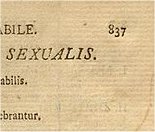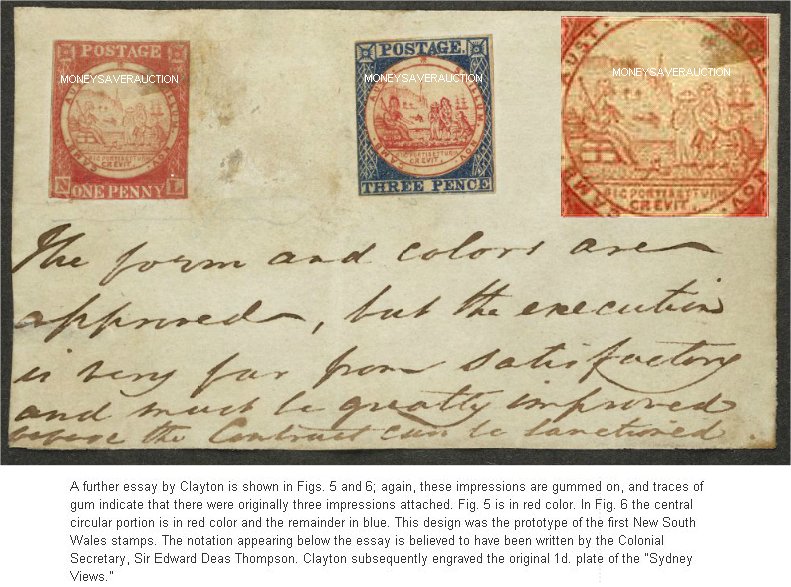The 1p red was first issued Jan 1, 1850 using plate I engraved by convict Robert Clayton
This was a sheet of 25, 5 rows, 5 columns. Plate I was with no clouds, no shaded hill, no shaded extended arm. Each individual die was hand engraved. These 25 dies would produce Plate I.
In Aug. 1850 plate II engraved by H.C. Jervis was used. The re-engraved plate featured clouds, shaded hill, shaded extended arm. Therefore, there are 50 design varietes of the 1850 1p red stamp. There were 190,000 (aprox) sheets printed using the copper plates from 1850-1851.
No stamps were issued using letters in the lower corners by the Postmaster Gerneral.
Over 160,000 convicts (most from the British Isles, Ireland, Scottland) were sent to Australia. The British Government first sent convicts to New South Wales, Australia in 1788, after the American Revolution. Because of their own population growth, NSW refused to accept convicts after 1842. Convicts were sent to Tasmania (formerly Van Diemens Land) in 1803. Western Australian accepted male convicts only from 1850 to 1868.
The design is a view of Sydney with a seated figure of Industry on a bale with the year 1788 in the lower panel of the bale, releasing convicts from their fetters (leggings), and pointing to an oxen plouging in the background. The motto Sic fortis Etruria crevit (Thus mighty Eturia grew) is a quotation from Virgil. They are known to collectors as "Sydney Views".
DETAILED:
James Raymond the Postmaster General of the British Colony of New South Wales had taken the initiative as early as November 1838 in issuing prepaid letter-sheets. These took the form of colourless embossed images impressed on to the letter-sheet of a design showing the Royal Coat of Arms on the Seal of the Colony with the additional words "GENERAL POST OFFICE" added. These sold for 2d each or 1s 3d per dozen, were valid for letters within the Sydney local post district and continued in use until May 1852.
By 1849 Postmaster General Raymond had suggested a range of postal reforms that eventually would lead to the appearance of postage stamps with 1d, 2d and 3d values in 1850. The Legislative Council had considered the Postage Bill before it was refereed for further work to a Select Committee, which had as one of its members Mr Daniel Cooper (1821-1902). He was later to become Sir Daniel Cooper GCMG and in 1869 the first President of The Philatelic Society which was to become The Royal Philatelic Society London in 1906.
Designs or essays for stamps were submitted to the Postmaster General by Robert Clayton (of Scottish ancestry) one of the main engravers in Sydney and like the early stamps of Mauritius were based on the 1d red and 2d blue of Great Britain. These were rejected in favour of a design, also by Clayton, based on the obverse of the Great Seal of New South Wales and the resulting stamps are know as the Sydney Views.
Paper:
Laid paper is a type of paper having a ribbed texture imparted by the manufacturing process. In the 19th century its use diminished as it was largely supplanted by wove paper. Laid paper is still commonly used by artists as a support for charcoal drawings.
In pre-mechanical papermaking (from the 12th century into the 19th century), the laid pattern was produced by the wire sieve in the rectangular mold used to produce single sheets of paper. A worker would dip the mold into a vat containing diluted linen pulp, then lift it out, tilt it to spread the pulp evenly over the sieve, and, as the water drained out between the wires, shake the mold to lock the fibers together. In the process, the pattern of the wires in the sieve was imparted to the sheet of paper.


Dating from 1790 the Great Seal, designed and engraved by Thomas Major, His Majesty's Engraver, depicts
"Convicts landing at Botany Bay; their fetters taken off and received by Industry sitting on a bale of goods, with her attributes, the distaff, beehive, pick-axe, and spade, pointing to oxen ploughing, the rising habitations, and a church on a hill at a distance, with a fort for their defence"
By 1826 and the introduction of the third Great Seal engraved by Thomas Wyon, current in 1849 and used for the design of the stamps, Industry had become Britannia and the figures more like prosperous settlers arriving in Sydney. These were the first official British Colonial postage stamps not to have the portrait of The Queen as a central element of the design.
The Tapling Collection at the British Library contains the essays for the 1d and 3d stamps. Thomas Tapling MP (1855-1891) had acquired his essays (from the Alfred van Dyck Collection) a few months before his death in 1891. These are affixed to a piece of paper with a space between them where a 2d essay would have originally have been pasted. A manuscript note "The form and colours are approved, but the execution is very far from satisfactory, and must be greatly improved before the contract can be sanctioned" is written on the piece of paper said to be in the hand of Sir Edward Deas Thompson, CB, KCMG, the Colonial Secretary.
It was Edward Bacon (1860-1938) (later Sir Edward Bacon KCVO) the then Curator of the Tapling Collection who had discovered the 2d essay missing from the piece in the Tapling Collection in the collection of the late Sir William B Avery, Bart (1853-1908) when it came onto the market in London in 1909. Avery's collection was extensive and had been purchased by the London dealer W H Peckitt for £24,500 a considerable sum. Peckitt probably sold the essay to the noted collector L L R Hausburg (1872-1917). Bacon in writing about the find in the July 1909 number of The London Philatelist refers to an article by M Georges Herpin (who had coined the word philatelie in 1864) in the early French philatelic journal Collectionneur de Timbres-Poste of 15th February 1865. Apparently the essay had at one time been in the collection of Count Primoli who was related to the family of Napoleon III. This connection was exploited and official applications were made on the Count's behalf for examples of stamps from overseas Governments. It seems likely that the 2d essay was removed from the paper with the 1d and 3d essays for the Count's collection. Bacon suggests in his article that the essay passed from Count Primoli to the collection of Mr A J Bulloch of Sydney and from him to Sir William who had purchased his collection of New South Wales in 1892. The 2d Essay is now in The Royal Philatelic Collection.
Collectors should be warned that reproductions of the Clayton essays of New South Wales have been made. The author, as Curator of the British Library's Tapling Collection, was surprised some years ago when exhibiting Clayton's essays at an exhibition in London, to see in the official Australian Post Office Collection, also on exhibition, the same piece bearing the 1d and 3d essays! At the close of the exhibition the items were compared. Research later revealed that Alfred van Dyck, who had owned the item before Thomas Tapling, had had rather good facsimiles made and while these are now quite rare, one had found its way into the Australian Post Office official Collection.
Like so many of the early British Colonial postage stamps printed far from the mother country, where the latest printing technology was to be found, production problems were a constant concern. The three values of the Sydney Views issue of 1850 were required by the first January when they were to be made available to the public. Such was the timetable for engraving that three engravers were employed to get the work done in time. The subsequent re-engravings of the plates, necessitated by wear, meant that by December 1851 a new design locally engraved featuring a not too flattering Head of Queen Victoria were introduced. Again wear was a problem and in 1856 printing plates made in London by Perkins, Bacon & Co were introduced.
Bacon, E D, A Remarkable Find in New South Wales Essays, The London Philatelist, volume 18, pages 168-170, July 1909
Basset Hull, A F, The Postage Stamps, Envelopes, Wrappers, Post Cards and Telegraph Stamps of New South Wales, London, Stanley Gibbons Limited for The Royal Philatelic Society London, 1911 and 1913
Basset Hull, A F, "Sydney Views" The Great Seal and the Wedgewood Medallion, The London Philatelist, volume 55, pages 80-85, July, 1946
Gans, O, "Sydney Views" and the Great Seal of New South Wales, The London Philatelist, volume 57, pages 153-157, September 1948.